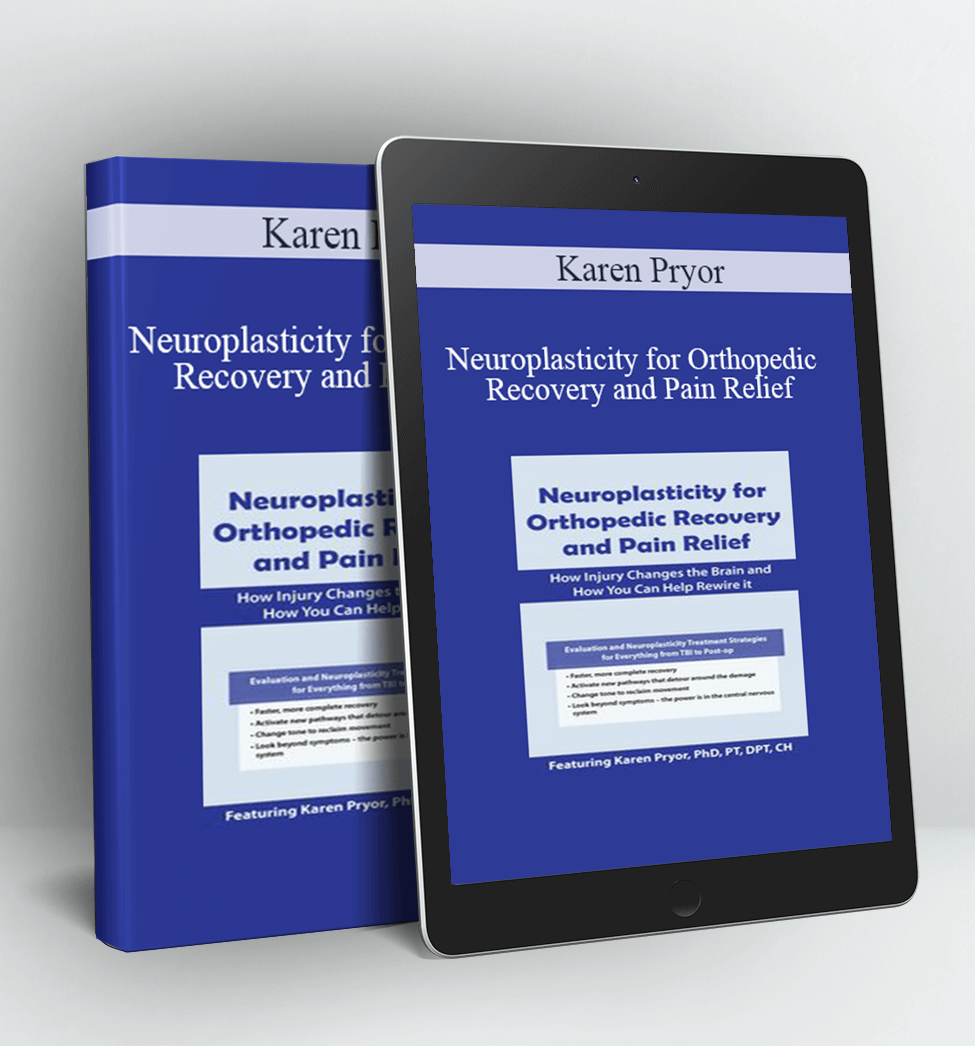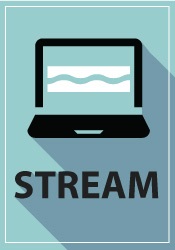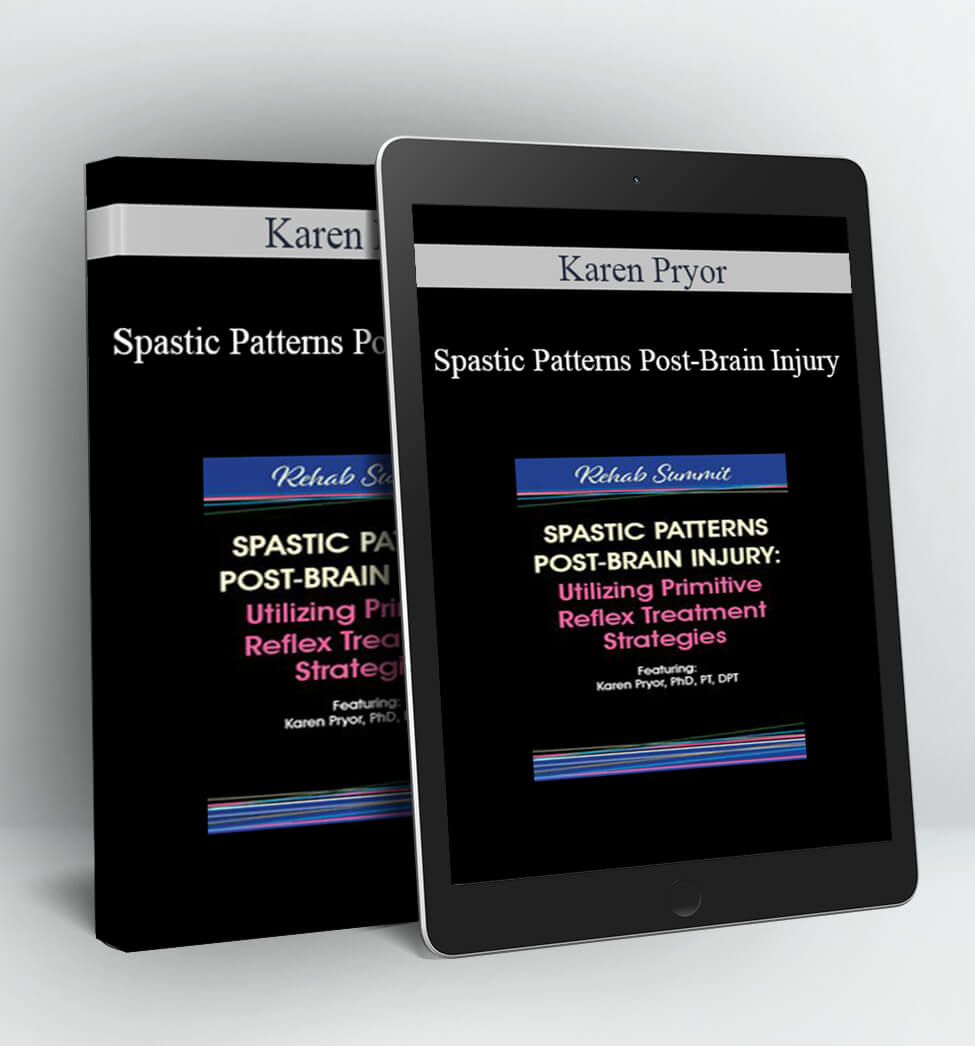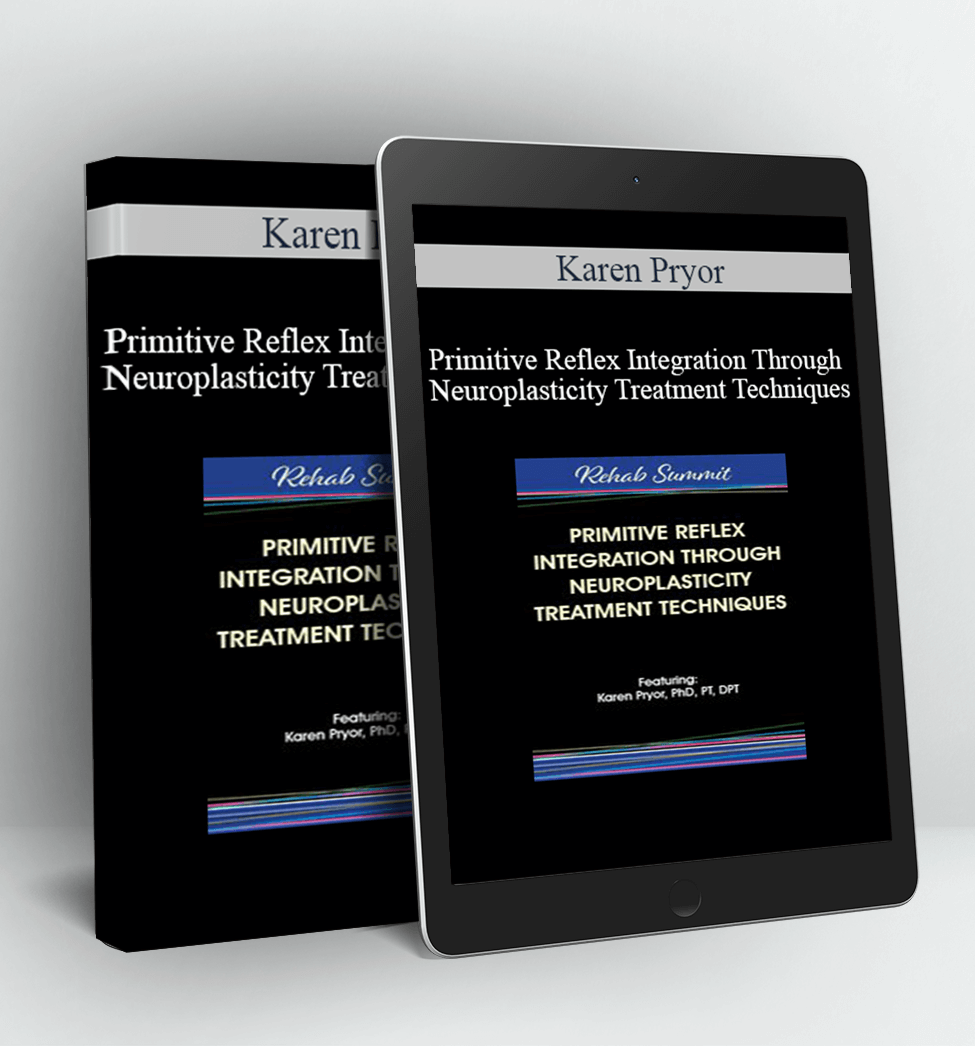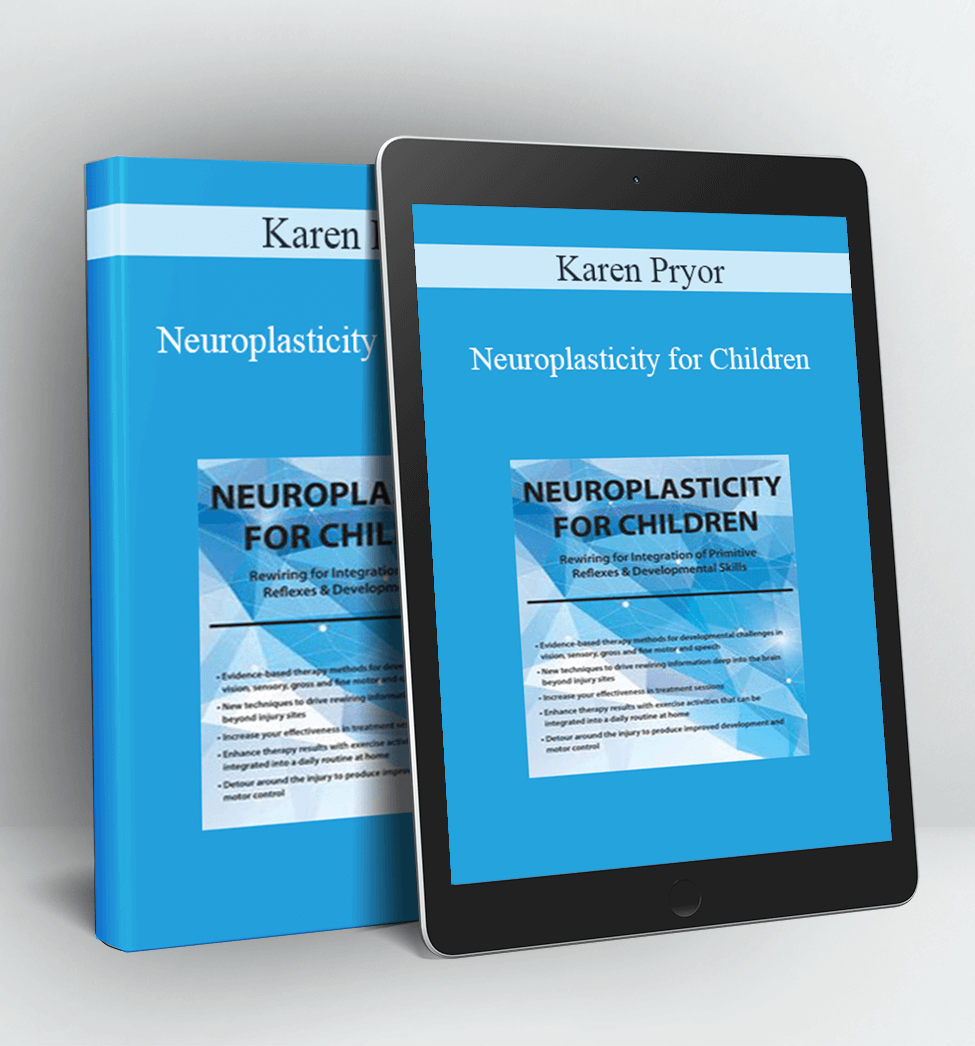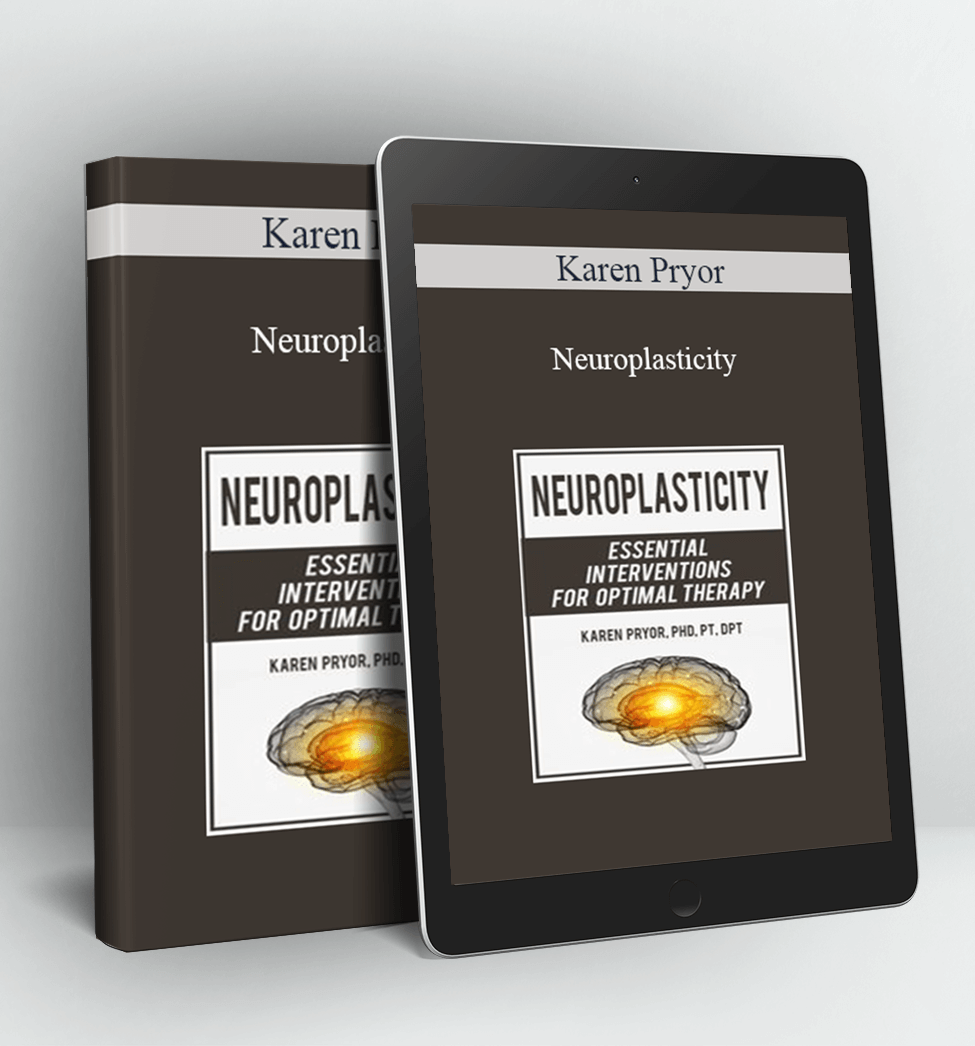
Neuroplasticity for Orthopedic Recovery and Pain Relief – Karen Pryor
- Faculty:
- Karen Pryor
- Duration:
- 6 Hours 32 Minutes
- Format:
- Audio and Video
- Copyright:
- Oct 30, 2020
Description
Neuroplasticity is one of the most important concepts when it comes to recovery, but is often overlooked when treating traumatic injuries. From traumatic injuries and post-op conditions to stroke, this course will deliver new thoughts on how to detour around damage and incorporate viable nervous system connections for faster, more complete recovery.
It’s never too late. The brain is not hard wired. It can change and adapt, even decades after the initial injury.
Drawing on over 40 years of clinical experience, Dr. Pryor will teach you practical, evidence-based techniques and interventions to stimulate the brain and enhance recovery.
- Evaluate the nervous system for damage and functional pathways
- Address tone abnormalities, vision and how they are intimately related and treatable
- Advance patient function with guided neurological reconnection
- Improve balance and visuospatial function to enhance client independence and feelings of safety
- Create actionable treatment plans to help at home
- Reclaim movement and quality of life
You will learn practical and useful techniques that can be implemented immediately within your practice. These evidence-based interventions will apply across the spectrum from initial injury to recovery. Purchase today! You can’t afford to miss out on this chance to get the skills, techniques and knowledge you can use to promote neuroplasticity and increased function for your patients!
Handouts
| Manual – Neuroplasticity for Orthopedic Recovery and Pain Relief (7.7 MB) | 83 Pages | Available after Purchase |
Outline
Improve Your Clinical Reasoning
- Central nervous system: the driver of ALL function
- Neuroanatomy
- Brain development
- Chronic pain: the nervous system remembers
- Feedback loops – pain is circular
Upgrade Your Clinical Assessment
- Neurological screens for injuries
- Identifying neurological challenges
- Primitive reflex patterns and the power of vision
- Sensory motor development
- Vision and hearing related deficits
- Sensation changes and reintegration
Integrate Neuroplasticity into Your Therapy Program
- Practice Makes NEW Pathways
- Polyvagal theory: Fight, Flight and Freeze
- Trauma memory related to therapy sessions
- Crucial component: sensory stimulation
- Smooth movement tremors and distraction
- Changing low and high tone qualities
- Challenge equates to change
- Bracing: to be or not to be
Design Effective Treatment Plans: Treat the Symptoms, the Cause and Neurological Changes
- Where to rewire the brain
- Use it or lose it
- Recruitment and retraining
- Use the lobes next door
- Before/after videos of sensory stimulation
- Beware of learned non-use
Expand Your Reach: Incorporate Vision
- The link between vision and balance and sensation
- Implications for neurological disorders: Stroke, TBI, concussion
- 3D vision impairments – depth perception and safety
- Practical strategies for vision on the move!
Taking it Home: Patients and Caregivers
- PT phone home – game changing HEP strategies to increase compliance
- Repetition and novelty are key
- Simple and effective activities to send home
- Explaining complex concepts to patients
Case Studies
- MVA with TBI
- Fall with knee injury and acute pain
- Low back pain – disc herniation with acute unrelenting pain
- Neurological signs post fall
- TKA acute pain and edema with resolution of pain and edema 2 treatments
- Anoxic injury – signs, symptoms and solutions
Faculty

Karen Pryor, PhD, PT, DPT Related seminars and products: 12
Health Sphere Wellness Center
Karen Pryor, Ph.D., PT, DPT, has a doctorate in physical therapy and has practiced for over 40 years in the field. Dr. Pryor is the owner of Health Sphere Wellness Center, an integrative therapy clinic in Tennessee. Involved with early intervention in the birth-three population for over 30 years, she has developed neuroplasticity techniques that are used in a wide variety of settings, including homes, childcare centers, and school systems, to advance pediatric therapy programs. She is the author of Ten Fingers Ten Toes Twenty Things Everyone Needs to Know.
Dr. Pryor serves on several boards, including the Leadership Interagency Council for Early Intervention, (2014-2024), a position to which she was appointed by Tennessee Governor Bill Haslam and Governor Bill Lee. In 2010, she received the President’s Volunteer Service Award for her contributions to the advanced treatment of children from President Barack Obama. In addition to her work with children, Dr. Pryor has served as an adjunct professor at the Tennessee State University Occupational Therapy School, and in the Volunteer State Community College Physical Therapy Assistant program. She is a clinical instructor for several universities and colleges. With her years of experience and passion for complete wellness, Dr. Pryor advances a more expansive view of how to integrate therapy throughout the lifespan by using COMPASS neuroplasticity techniques.
Speaker Disclosures:
Financial: Karen Pryor is owner of Health Sphere Wellness Center. She receives a speaking honorarium from PESI, Inc.
Non-financial: Karen Pryor serves on the Leadership Interagency Council for Early Intervention board.
Access Download Neuroplasticity for Orthopedic Recovery and Pain Relief – Karen Pryor right now!
Delivery Method:
After your purchase, you’ll get access to the downloads page. Here, you can download all the files associated with your order.
Downloads are available once your payment is confirmed, we’ll also send you a download notification email separate from any transaction notification emails you receive from Coursedownloads.

